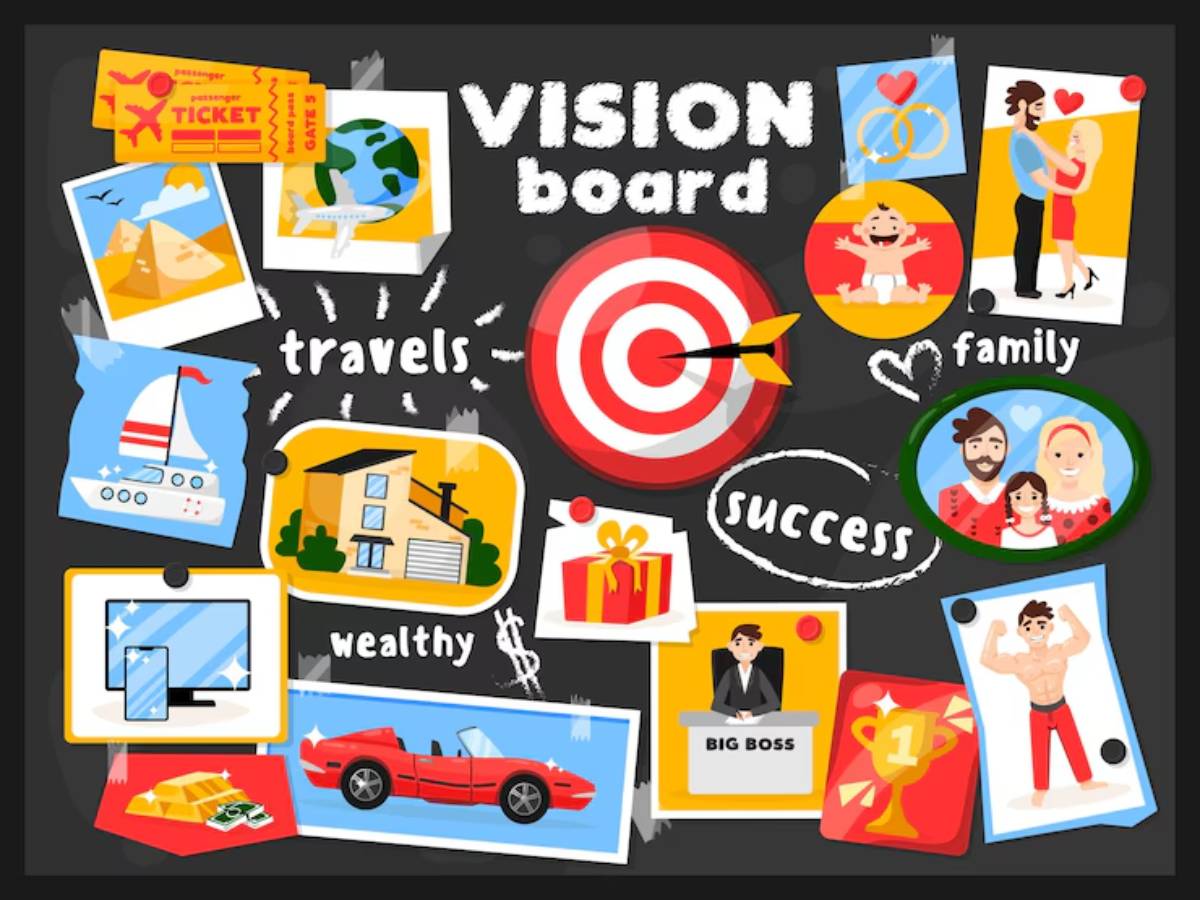
How Introverts and Extroverts Use Vision Boards Differently
Not all dreams look the same. Neither do the ways we organise, pursue, or visualise them. Personality plays a huge role in how we dream, plan, and create—and that extends right into our vision boards. The process of turning intentions into visuals isn’t one-size-fits-all, especially when it comes to the different inner workings of introverts and extroverts.
Understanding the introvert vision process and extrovert goal setting can help tailor a vision board that doesn’t just look pretty, but feels personal and powerful. It’s all about personality alignment—matching your board to your natural energy, rhythms, and way of processing the world.
Let’s dive into how these two personality types approach vision boards, what makes their methods unique, and how to harness both energies in creative, goal-aligned ways.
Vision Boards: More Than Just a Craft Project
A vision board isn’t a scrapbook. It’s a focused, intentional visual tool that helps bridge the gap between where someone is now and where they want to be. The images aren’t random—they’re symbolic. They hold emotional resonance. And how someone interacts with these images can reveal a lot about their inner world.
Some people need space and solitude to dream. Others need movement, energy, and external validation. No surprise: these lean toward introverted and extroverted tendencies.
How Introverts Approach Vision Boards
The introvert vision process tends to be internal, reflective, and rooted in quiet, deliberate energy. Introverts are often deeply connected to their inner world and may spend more time thinking through a goal before taking action on it.
1. Private Planning
Introverts typically prefer creating vision boards in solitude. They might light a candle, play soft music, and spend hours gathering images that feel just right. The process itself becomes a meditative experience, not a group activity.
2. Depth Over Breadth
Instead of packing the board with dozens of goals, introverts often focus on fewer, deeper intentions. The board may be minimal but packed with meaning.
For example:
- A single photo of a forest might represent peace, health, and connection to nature.
- One handwritten quote may carry more weight than 20 cutouts from magazines.
3. Symbolism and Subtlety
Rather than literal imagery, introverts may lean toward metaphors—birds for freedom, keys for opportunity, open doors for transition. These visuals align with their introspective nature.
4. Energetic Anchoring
Introverted vision boards often serve as emotional grounding tools. They’re placed in quiet, sacred spaces—bedroom corners, inside journals, or even tucked behind closet doors. It’s not about visibility to others; it’s about internal alignment.
Want to understand how different types of boards can support various stages of your goal-setting journey? Manifestation Board vs Action Board offers a great side-by-side breakdown.
How Extroverts Approach Vision Boards
In contrast, extroverted goal setting thrives on interaction, expression, and dynamic visuals. Extroverts process ideas by talking them out, brainstorming with others, and staying in motion.
1. Collaborative Creation

Extroverts may create vision boards in groups—at parties, workshops, or vision board brunches. They feed off shared energy and love, swapping ideas and encouragement during the process.
2. Bold and Abundant Layouts
Where introverts go for minimalism, extroverts often embrace visual variety. Colourful images, vibrant quotes, bold fonts, glitter—it’s all fair game. The board is meant to be seen, felt, and celebrated.
3. Literal Representations
Extroverts tend to use visuals that are direct and clear. Dreaming of a beach vacation? Expect a full-page tropical photo. Launching a podcast? There’s a microphone front and centre. Clarity helps them stay energised and focused.
4. Public Placement
These boards often hang where they can be admired and talked about—office walls, living rooms, even as digital screensavers. The board becomes a source of external motivation and a conversation starter.
The Importance of Personality Alignment
Why does this all matter? Because when a vision board matches someone’s personality, it works better. It resonates more deeply. And most importantly, it’s more likely to inspire consistent engagement.
Forcing an introvert into a vision board party might drain their creativity. Asking an extrovert to quietly cut pictures alone might feel uninspiring. It’s about designing a vision experience that fits how someone already processes goals, dreams, and desires.
Can You Be Both?
Absolutely. Many people have a mix of introvert and extrovert traits—or shift depending on mood or context.
In that case, blend both methods:
- Start with a quiet brainstorming session (introvert) and follow up with a group workshop (extrovert).
- Use symbolic images alongside bold, literal ones.
- Keep one private board and one public-facing digital board.
It’s not a rigid binary. It’s a spectrum. The key is knowing what feels most natural in each season of life.
Tips for Introverts Creating Vision Boards
- Create a ritual: Light a candle. Journal. Ease into it.
- Use metaphors: Choose images that evoke feeling, not just things.
- Keep it private: Store it in a journal or behind a closet door.
- Let it evolve quietly: Change images gradually. Let it breathe with you.
Tips for Extroverts Creating Vision Boards
- Host a vision board event: Gather friends for a fun, energising creation day.
- Make it bold: Use colour, size, and sparkle.
- Place it visibly: Let your board keep you publicly accountable.
- Talk it out: Share your goals. Say them aloud. Let others reflect them back to you.
Using Vision Boards to Complement Each Other
Interestingly, introverts and extroverts can learn a lot from each other’s styles. Introverts might benefit from adding a bit more external excitement to keep their goals top of mind. Extroverts might slow down and go inward, connecting with their goals on a deeper level.
This isn’t about fixing anyone. It’s about expanding how goals are approached—and vision boards are a fun, tangible way to do that.
Personality Isn’t Static
Life changes. So do energy levels. An extrovert in burnout might crave solitude. An introvert ready to leap into something new might suddenly seek group visioning spaces.
Give yourself permission to shift your style based on your current state, not your past labels.
Looking for a way to deepen your vision board process with the unique way your brain works? Vision Board Techniques for Visual Learners explores how sensory design can boost effectiveness, especially for those who think in pictures.
Your Vision, Your Way

Whether someone is loud or quiet, inward or outward, deeply feeling or outwardly focused—it doesn’t matter. What matters is how the goal is experienced. Vision boards are deeply personal tools. They’re meant to reflect not just the dreams themselves, but the energy behind them.
So if you’re an introvert, embrace the quiet layering of a thoughtful vision. If you’re an extrovert, celebrate the bold energy of your visual roadmap. And if you’re somewhere in between? Great. You get the best of both worlds.
Make it yours. Make it true. And most of all, make it aligned.
Because no matter the style, when vision and personality meet, that’s when manifestation gets real.


